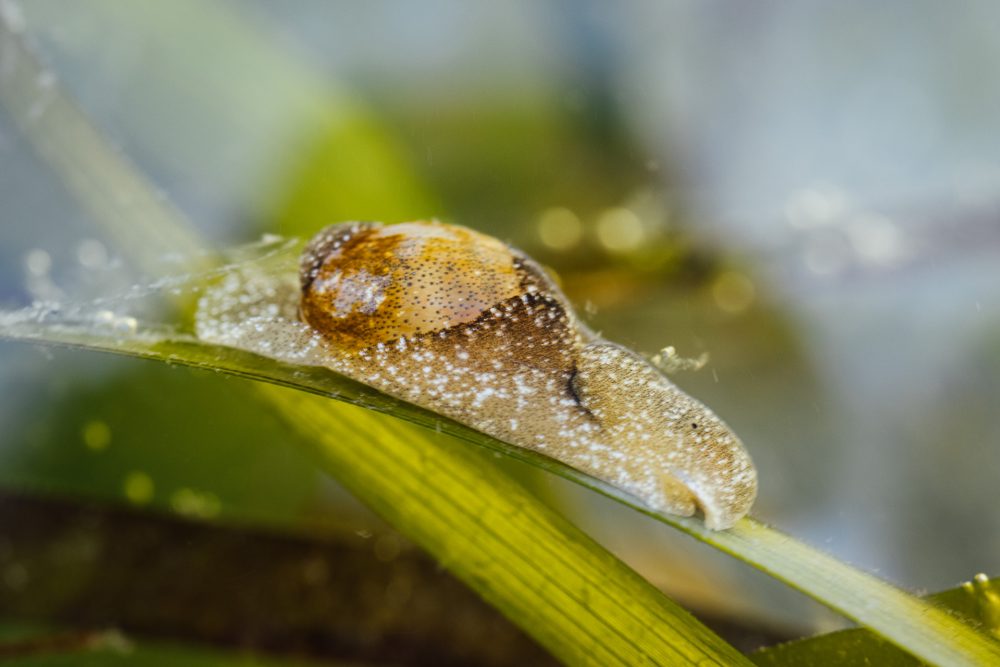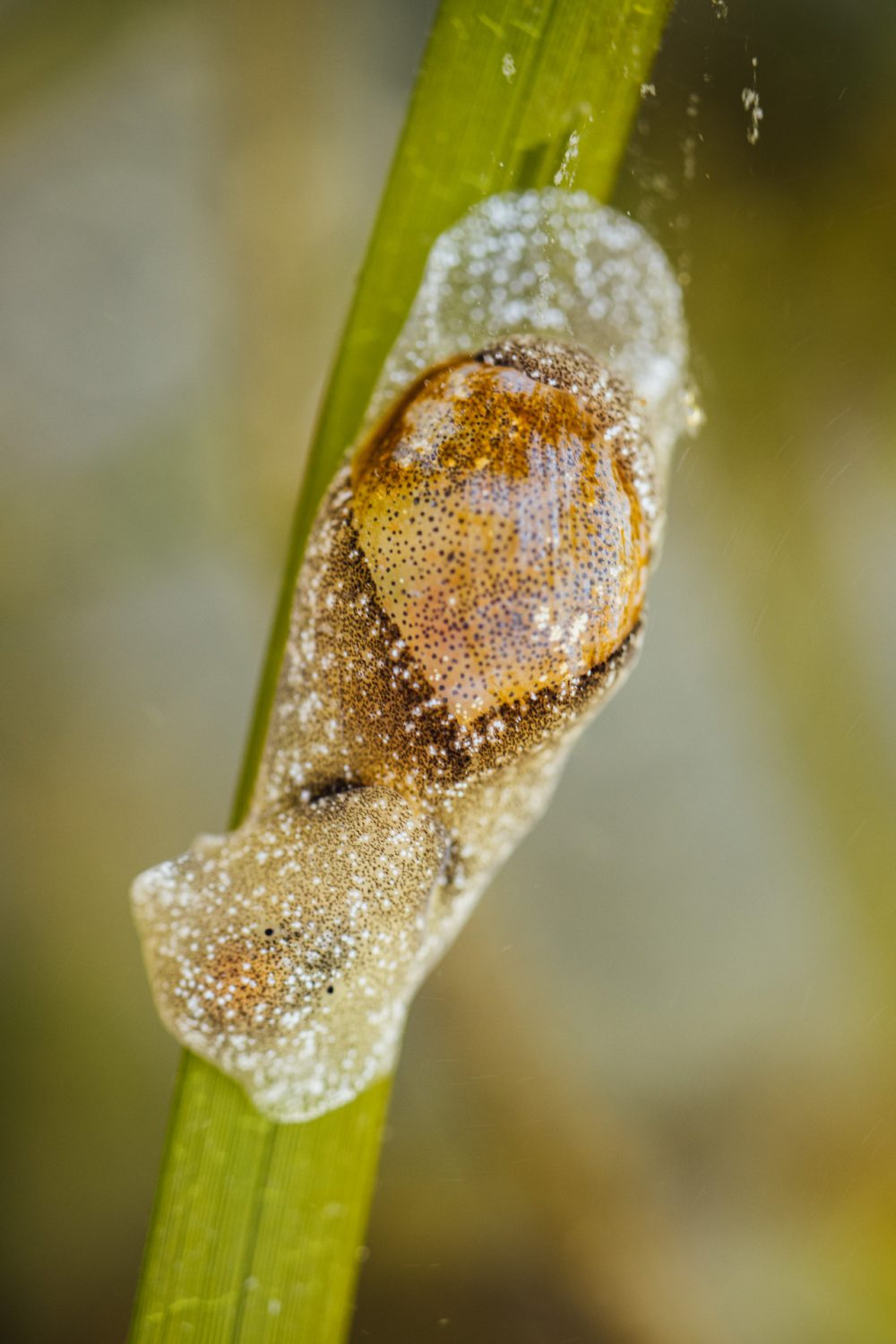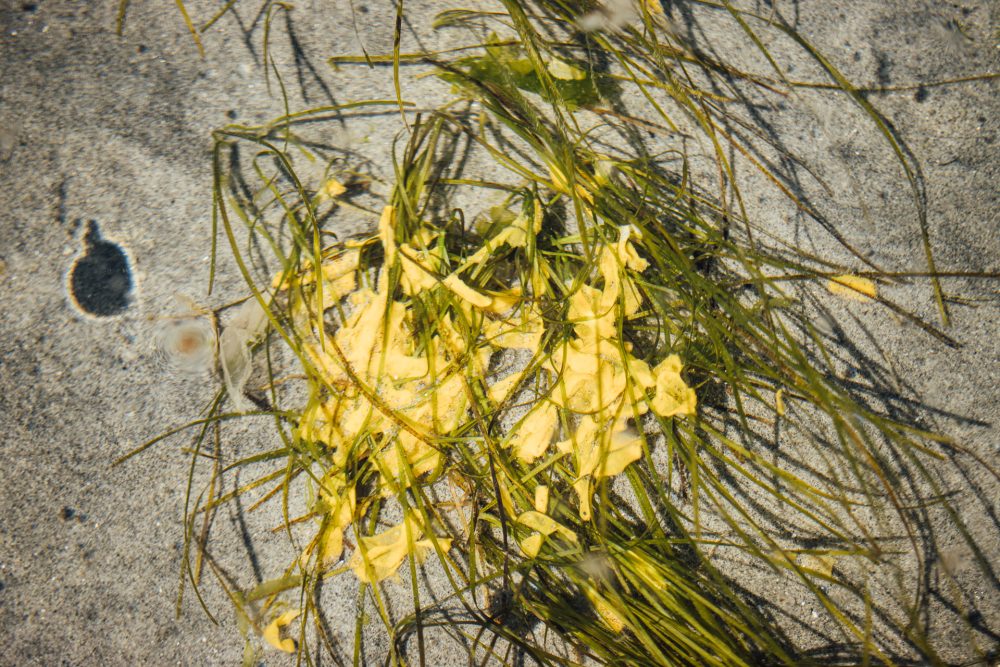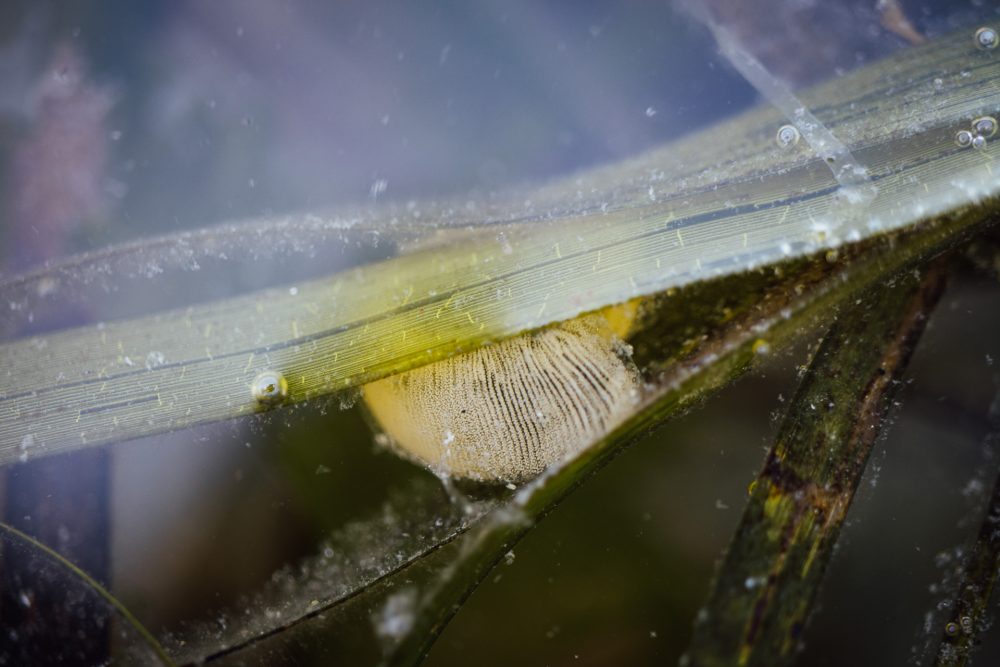The blister glassy-bubble snail (Haminoea vesicula) is common in the sheltered eelgrass beds on the east side of Vancouver Island, British Columbia. Typically known as a “bubble snail,” this species of sea snail also goes by the name blister paper bubble, white paper bubble, and the white bubble shell. This unique marine creature belongs to the family Haminoeidae and is identifiable by its distinctive appearance and intriguing behaviour. At Kye Bay in Comox, British Columbia, blister glassy-bubble snails and egg masses were common in the eelgrass beds in early June. Although they are small, once seen the snails and egg masses were hard to miss!

What’s in a Name?
The blister glassy-bubble snail derives its common name from its thin bubble-like shell. The shell is too small to cover the entire snail and is open like a partially-closed tube. The mantle of the bubble snail curves up and around the thin shell. The shell is thin, fragile, and partially translucent, revealing the body of the snail underneath it. This characteristic of a thin shell is the source of other common names like white paper bubble and blister paper bubble. The snail’s body is also semi-transparent. Interestingly, the bubble snail is a marine gastropod that has characteristics of both snails and nudibranchs.

The blister glassy-bubble snail is a cephalasphidean which means that it has a distinctive cephalic head shield. It uses its wedge shaped head to push through sediment like sand or fine mud. In the photograph above, two black eye spots are clearly visible on the head shield of this delightful snail.

The bubble snail is typically small, reaching a size of around 2 centimetres in length. Its body is elongated and appears more nudibranch-like than snail-like. The mantle wraps up and around the small shell which it partially hides. Brown and white speckles on the body of the snail give it a “sandy” appearance, and help it blend in with its surroundings. The snail is about the width of a blade of eelgrass which makes grazing for algae and diatoms on this aquatic grass easy.
Where Can You Find Bubble Snails?
Bubble snails are primarily found in shallow coastal waters, particularly in intertidal zones with eelgrass beds. The sheltered beaches and mudflats of Vancouver Island’s east coast provide an ideal habitat for the bubble snail, as they offer a rich supply of food and suitable conditions for reproduction. These snails are common grazers on eelgrass. White bubble shells use a specialized radula, a feeding structure, to graze on diatoms on the surfaces they encounter.

Bubble snails are well adapted to the dynamics of a tidal flows in eelgrass beds. When water flow increases they use two different strategies to maintain position. On eelgrass, the snails “hook” the edge of the cephalic shield (the head of the snail) on the leading edge of the eelgrass which rotates them into position with the flow. On sediment, bubble snails use a different strategy. Sediment sticks to the mucus created by the snail which “sheets” their bodies. The sheet of sediment adds significantly to the weight of the snail which makes it less likely to be dislodged by the flow of water. Sheeting is a continuous process. Sediment is added to and carried down the length of snail before being left behind in a sediment-laden mucus trail.

Blister Glassy-Bubble Snail Eggs
Like many marine creatures, bubble snails lay their eggs on substrates in the water. Following fertilization, each snail can lay numerous eggs. The eggs are deposited in white and yellow gelatinous ribbons on blades of eelgrass. The egg masses are common in the eelgrass tidal pools and very noticeable in early June.

The eggs develop within these masses, eventually hatching into veliger larvae. After 30 days, the young snails that survive the pelagic part of the life cycle settle into the sediment. Here they will overwinter into the next summer season when the cycle will begin again.

Worth Looking For
Observing the glassy blister-bubble snail in its natural habitat can be a fascinating experience for tide pool enthusiasts along the shores of eastern Vancouver Island. However, it is essential to observe these delicate creatures with care, ensuring that their habitat is unharmed. Sunscreen on hands or legs can wash off into the water of the tide pools where this snail makes its home. Avoid handling the bubble snails and consider applying protective sunscreen after exploring the eelgrass beds. With their delightful appearance and intriguing lifestyle, the glassy blister-bubble snail adds to the rich biodiversity of intertidal zone of the Salish Sea, captivating both researchers and nature enthusiasts alike. Look for it in tide pools at low tide the next time you’re on a Vancouver Island beach with eelgrass beds!